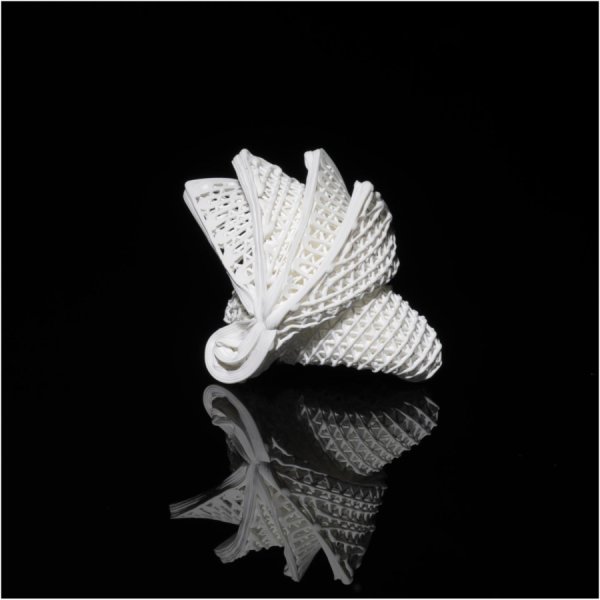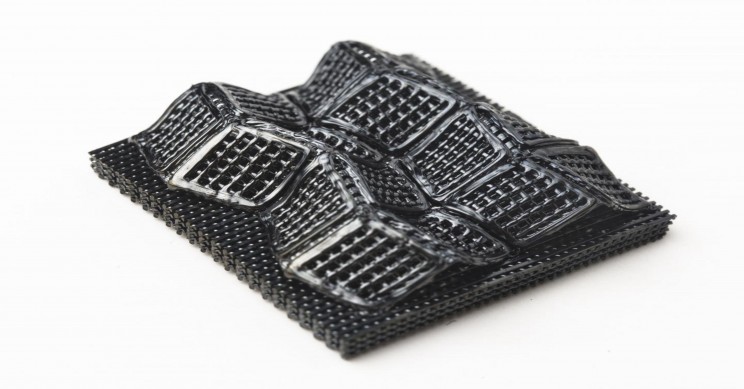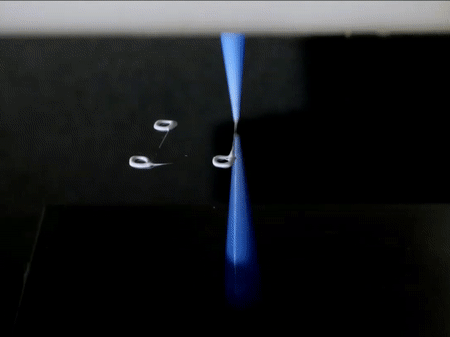Researchers from the City University of Hong Kong (CityU) have developed a novel ink for creating 4D printed ceramics. Containing ceramic nanoparticles and elastic polymers, this ink enables scientists to create transforming objects on a 3D printer.
Leading the research Professor Jian Lu, Vice-President (Research and Technology) and Chair Professor of Mechanical Engineering, believes that this ink can “turn a new page in the structural application of ceramics.”
“Since ceramic is a mechanically robust material that can tolerate high temperatures, the 4D printed ceramic has high potential to be used as a propulsion component in the aerospace field.”

4D printing and ceramics
4D printing involves conventional 3D printing methods with shape memory polymers that allow morphing properties of an object. This concept was coined by MIT researcher Skylar Tibbits, and has since been explored by numerous teams, including Delft University of Technology (TU Delft) researchers that created a 3D printed self-folding tulip. Nevertheless, 3D printed ceramic structures with shape-shifting capabilities are a relatively new concept.
According to Professor Lu, due to the high melting point of ceramic, it is a challenge using conventional laser printing to make ceramics. Existing 3D printed ceramic precursors are also difficult to deform as a result of its solid, non-flexible structure, which hinders the production of ceramics with complex shapes.
Addressing these limitations, over a two and a half year-span, Professor Lu and his team developed elastomeric poly(dimethylsiloxane) nanocomposites (NCs) that are able to be 3D printed, deformed, and transformed into silicon oxycarbide-based NCs, for the growth of complex ceramic “origami” 4D printed ceramic structures.
The 3D printed ceramic precursors used to form a 4D object are soft in texture and can be stretched beyond three times their initial length.

3D printing shape-shifting ceramics
The researchers created two additive manufacturing methods to process their ceramic ink into 4D printed structures. In the first shaping method, a ceramic precursor and substrate were 3D printed using the ceramic ink. The substrate was then stretched using a biaxial stretching device. The precursor was placed on the stretched substrate using joints.
“With the computer-programmed control of time and the release of the stretched substrate, the materials morphed into the designed shape,” according to the CityU research paper “Origami and 4D printing of elastomer-derived ceramic structures.”
The second method involved a designed pattern directly printed on the stretched ceramic precursor. Using the same computer-programming control, the structure underwent the self-morphing process. When the stretched ceramic precursors are released, they are able to reshape and following heat treatment, the precursors turn into ceramics.
The research states that “the resultant elastomer-derived ceramics are mechanically robust [and] can have a high compressive strength-to-density ratio and can come in large sizes with high strength compared to other printed ceramics.”
“The whole process sounds simple, but it’s not,” said Professor Lu. “From making the ink to developing the printing system, we tried many times and different methods.
“Like squeezing icing on a cake, there are a lot of factors that can affect the outcome, ranging from the type of cream and the size of the nozzle to the speed and force of squeezing, and the temperature.”
Following this material breakthrough, Professor Lu and his team are now aiming to improve the mechanical properties of their elastomer-derived ceramic, such as reducing its brittleness.

The research paper “Origami and 4D printing of elastomer-derived ceramic structures” which was published in the Advanced Sciences journal this week is co-authored by Professor Jian Lu, Guo Liu, Yan Zhao, and Ge Wu.
For more of the latest research related to 3D printing sign up to the 3D Printing Industry newsletter, Also, follow us on Twitter, and like us on Facebook.
On the lookout for new talent or seeking a career change? Search and post 3D Printing Jobs for opportunities and new talent across engineering, marketing, sales and more.
Featured image shows a 4D printed ceramic folding flat surface known as a Miura-ori. Photo via CityU.


